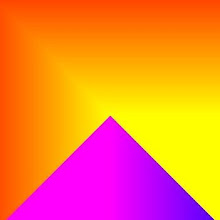You will see that a number of pre-packaged examples come with the Processing installation, available from the menu File_Examples. However, a number of people have developed custom packages. To add them, you need to add a "libraries" directory to your Sketchbook directory. The JAR file you add should be contained in a library directory. If the custom package does not then appear in File_Sketchbook_libraries, try re-booting your computer.
"unexpected token: void"
I ran into this compiler error when writing a method that I expected to execute before the void setup() method. However, Java is not a sequential language. In a normal Java application, you might not be aware of this because sequential execution is guaranteed by a constructor or main method. But here, you need to place all sequential processing within the void setup() method. An error regarding possible non initialization of a variable, where this is entrusted to another independent method, may have a similar cause.
Adding mathematical and other symbols appearing in your code
A problem that I came across is that html may not directly render mathematical and other symbols. A good resource explaining how to do this can be found at:
http://comers.citadel.edu/math_sym2005.htm#arrows
I will add more general issues/problems as I come across them.
